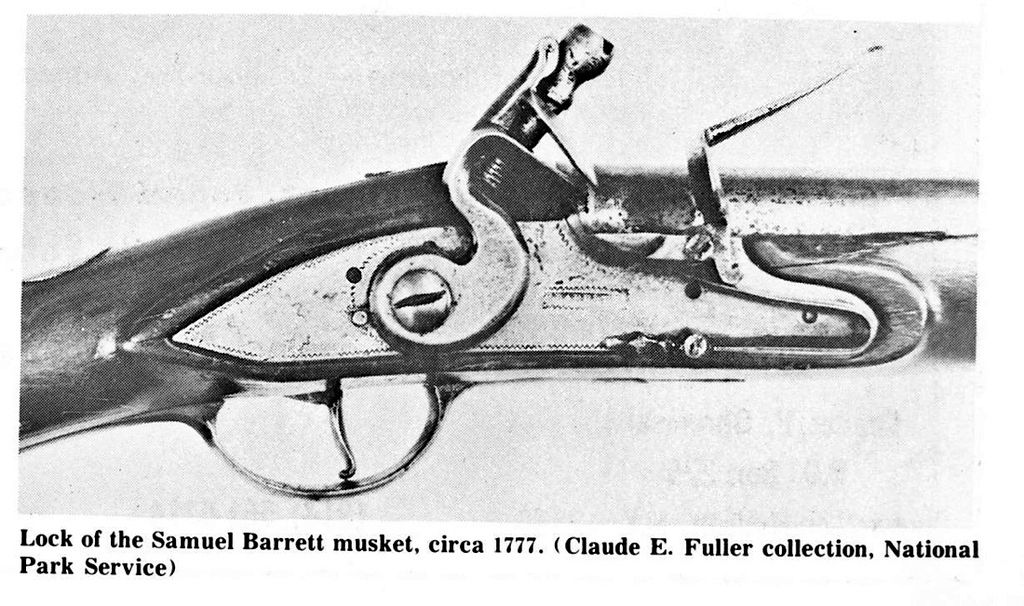In about 1975 I clipped an article from Gun Report, “Samuel Barret, Patriot Gunsmith, Concord, Massachusetts”. It detailed his activities during the revolution, and included pictures and description of one of two existing original muskets made by him. I thought the martial minded among us might enjoy seeing it.


From the article:
“Insofar as is known, only two authenticated Barrett muskets have survived the attrition of time. One of these is in the Claude E. Fuller Collection at the Chickamauga and Chattanooga National Military Park, Oglethorpe, Georgia, which is under the control of the National Park Service. The other musket is privately owned.
“Both of these muskets are of the Brown Bess type and are die-stamped “S. Barrett,” on the lock plate. The maker’s name is in raised letters in a sunken panel, which is located forward of the hammer. The lock plate bears a die-stamped wavy line border. This border stamp is also used to make a decorative frame around the name panel. Without question, these muskets were made at Barrett’s Mills.
“The musket in the Fuller collection has a grooved sight at the breech which extends into the barrel tang. It has a knife-blade sight four inches from the muzzle. There is a bayonet lug underneath the barrel. The rounded pan is integral with the lock plate and has a relatively high fence. Behind the hammer, there appears to be the outline of a pine tree. The brass sideplate is six inches long and has a line engraving around the edges. On the wrist of the stock, there is a plain, brass escutcheon. The forward end of the trigger guard terminates in an acorn finial and there is a line engraving around the entire plate. The bow of the trigger guard bears the engraved design of a rattlesnake, with the head and rattles clearly visible.
“The musket is unique in that the original owner’s name, “Daniel Everit,” is inscribed on the engraved butt tang.”
Spence


From the article:
“Insofar as is known, only two authenticated Barrett muskets have survived the attrition of time. One of these is in the Claude E. Fuller Collection at the Chickamauga and Chattanooga National Military Park, Oglethorpe, Georgia, which is under the control of the National Park Service. The other musket is privately owned.
“Both of these muskets are of the Brown Bess type and are die-stamped “S. Barrett,” on the lock plate. The maker’s name is in raised letters in a sunken panel, which is located forward of the hammer. The lock plate bears a die-stamped wavy line border. This border stamp is also used to make a decorative frame around the name panel. Without question, these muskets were made at Barrett’s Mills.
“The musket in the Fuller collection has a grooved sight at the breech which extends into the barrel tang. It has a knife-blade sight four inches from the muzzle. There is a bayonet lug underneath the barrel. The rounded pan is integral with the lock plate and has a relatively high fence. Behind the hammer, there appears to be the outline of a pine tree. The brass sideplate is six inches long and has a line engraving around the edges. On the wrist of the stock, there is a plain, brass escutcheon. The forward end of the trigger guard terminates in an acorn finial and there is a line engraving around the entire plate. The bow of the trigger guard bears the engraved design of a rattlesnake, with the head and rattles clearly visible.
“The musket is unique in that the original owner’s name, “Daniel Everit,” is inscribed on the engraved butt tang.”
Spence




